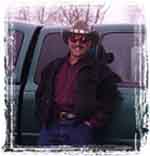This latest success, the creation of transgenic parrots, was just the most recent high point in a short career dotted with high points. As a Ph.D. candidate, he had done groundbreaking work on the evolutionary role of intelligence—attempting to answer, at the genetic level, basic questions—like how primates developed such a high a level of intelligence, while, say, tree frogs, had not. If intelligence held such great evolutionary advantages, how come tree frogs and hamsters didn’t develop 140 IQs? In some respects, the answer was self-evident—for a 140 IQ the physics of anatomy demanded a three-pound brain, something that could be a distinct disadvantage to anotherwise two-ounce tree frog.
Ross pursued the overarching hypothesis that animal life had all of the intelligence that any form needed to compete effectively in its respective ecosystem, and no more.
So how did nature modulate that necessary intelligence? What were the biological underpinnings that determined why a parrot was smarter than a tree frog, but not as smart as Homo sapiens? How did a creature’s genetic blueprint redraw itself in order to express the necessary level of intelligence to allow that creature an effectively competitive position within its ecosystem?
Ross wanted to know. His research had already shown that the NR2B gene had considerable influence on the biomechanics of that question. His new line of inquiry would test the limits of genetic involvement, utilizing creatures that had already demonstrated the ability to master, at least on an elementary level, associative speech.
Ross stepped aside and allowed a determined looking nurse to barrel past him. New York Presbyterian Hospital was right around the corner—just across the street from the university—and whatever she was doing tonight was likely to be more important to somebody than anything he had planned. It was starting to flurry again. It looked like they had gotten about an inch earlier in the day, and that was on top of the six inches they’d been hit with a week before. But the sidewalks on 65th were well-sanded and salted, melting the snow as soon as it hit the ground, leaving a sole-sucking, sloppy slurry for Ross to splash through.
I wonder what those little birds are thinking? Ross thought.So this morning I come across this clip of palaeobiologist Simon Conway Morris discussing virtually the same subject. Not only does he sound like Prof. Ross, he even sort of looks like him:
It's gratifying to know that my fictional Dr. Ross was barking up the right tree. Now if he could only sell some books for me...
Oh, Little Birdies! is also available as a Kindle E-Book.







No comments:
Post a Comment